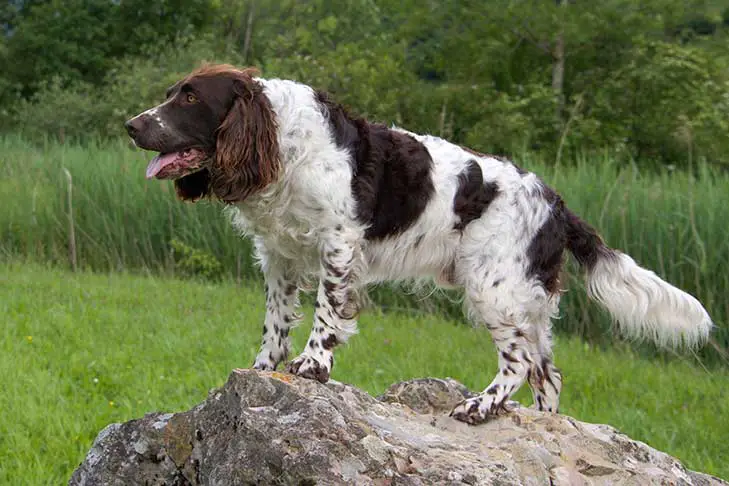Deutscher Wachtelhund
Average sizes and life
expectancy of the breed.
Height
18-21 inches
Weight
40-55 pounds
Life Expectancy
12-14 years
Breed Traits & Characteristics
About the Breed

Owning a dog is not just a privilege; it’s a responsibility. They depend on us for, at minimum, food and shelter, and deserve much more. When you take a dog into your life, you need to understand the commitment that dog ownership entails.
 Health
Health
 Grooming
Grooming
 Exercise
Exercise
 Training
Training
 Nutrition
Nutrition
History
The Stober, a versatile breed documented in German history as early as 1719, was recreated in the 1880s by a group of German hunters. The Stober was reputed to possess bloodhound-like abilities for following scents. Germans produced sports spaniels with other canines that had a shown desire for hunting using remains of that breed discovered in Bavaria. They created the Wachtelhund, which is pronounced: “Valk-tel-hund.” In 1903, the breed received formal recognition. The Verein für Deutsche Wachtelhund (VDW) is the name of the German Wachtelhund club. This breed is only owned by gamekeepers and hunters in Germany; they are not available for sale to non-hunters.


